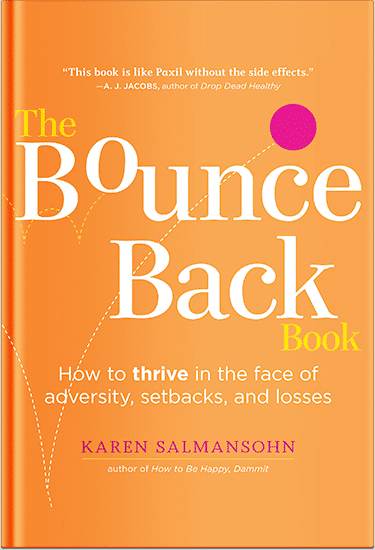 Colorectal surgery has evolved significantly with advancements in medical technology, and robotic-assisted procedures are now at the forefront of this transformation.
Colorectal surgery has evolved significantly with advancements in medical technology, and robotic-assisted procedures are now at the forefront of this transformation.
Offering greater precision, faster recovery, and improved outcomes, robotic colorectal surgery is becoming the preferred choice for many patients and surgeons.
Below are seven key benefits of robotic colorectal surgery that highlight why it’s a superior alternative to traditional open and laparoscopic methods:
1. Enhanced Precision and Accuracy
Robotic systems can provide surgeons with high-definition 3D visualization and advanced wristed instruments that mimic the natural movements of the human hand. This level of precision is particularly beneficial in colorectal surgery, where delicate structures like blood vessels and nerves must be carefully navigated. The robot’s ability to filter out hand tremors can also ensure smoother, more controlled movements, reducing the risk of errors.
However, if you’re considering robotic surgery Singapore or similar locations, understanding its advantages can help in making an informed decision.
2. Minimally Invasive Approach
Robotic colorectal surgery revolutionizes traditional techniques by employing millimeter-sized incisions rather than the extensive abdominal openings required in conventional surgery. These micro-incisions, typically less than 1 cm each, can dramatically reduce trauma to abdominal muscles and internal tissues.
The robotic system’s articulated instruments can also provide unparalleled maneuverability, enabling surgeons to navigate the complex anatomy of the colon and rectum with sub-millimeter precision. This approach can help preserve critical anatomical structures while minimizing collateral damage to surrounding tissues.
3. Reduced Pain and Faster Recovery
The minimally invasive nature of robotic colorectal surgery can translate to dramatically less postoperative discomfort. With nerve-sparing techniques and tiny incisions, patients can report pain levels lower than with open surgery. This significant pain reduction decreases reliance on opioid medications, minimizing associated side effects like nausea and constipation.
Furthermore, most patients achieve independent mobility within 24 hours post-operation and can resume light activities in 3-5 days. Complete recovery typically occurs in 2-3 weeks versus 6-8 weeks for open procedures.
The accelerated healing process can stem from reduced inflammatory response and tissue trauma, allowing faster return of bowel function. These benefits can collectively enable patients to regain normalcy in their personal and professional lives with minimal disruption.
4. Lower Risk of Complications
 Robotic colorectal surgery’s advanced technology can provide a substantial safety advantage over conventional methods. The system’s 10x magnified 3D visualization and intelligent motion scaling allow surgeons to identify and preserve microscopic structures with unprecedented accuracy.
Robotic colorectal surgery’s advanced technology can provide a substantial safety advantage over conventional methods. The system’s 10x magnified 3D visualization and intelligent motion scaling allow surgeons to identify and preserve microscopic structures with unprecedented accuracy.
The robotic platform’s enhanced dexterity is also particularly beneficial in pelvic anatomy, where it reduces urinary and sexual dysfunction risks. For patients with comorbidities like diabetes or obesity, these safety improvements are particularly significant. The combination of precision instrumentation and surgeon-controlled robotics can create a more predictable surgical environment with superior patient outcomes across all risk categories.
5. Improved Outcomes for Complex Cases
Robotic colorectal surgery offers distinct advantages for patients with challenging conditions like rectal cancer, diverticulitis, or Crohn’s disease. The robotic system’s articulating instruments can provide superior maneuverability in the narrow confines of the pelvis, where traditional laparoscopic tools may be limited.
Enhanced 3D visualization allows surgeons to meticulously dissect tumors while preserving critical nerves involved in bowel and bladder function. The precision of robotic assistance can also reduce positive margin rates, contributing to better long-term survival outcomes and lower recurrence rates than conventional approaches.
6. Shorter Hospital Stays
The minimally invasive nature of robotic colorectal surgery can translate to significantly reduced hospitalization periods. Traditional open colorectal procedures typically require 5-7 day hospital stays due to extensive tissue trauma and slower recovery.
In contrast, robotic-assisted patients are typically discharged in 2-3 days, with some same-day discharges reported for select cases. Smaller incisions can lead to less postoperative ileus (bowel paralysis), enabling faster return of digestive function.
Lastly, reduced pain medication needs and early mobility can further accelerate recovery. This efficiency can benefit patients and healthcare systems by lowering costs associated with prolonged hospitalization while minimizing exposure to hospital-acquired infections.
7. Better Cosmetic Results
Robotic colorectal surgery can leave patients with barely noticeable scars compared to the prominent 6-8 inch incisions of open surgery. The procedure typically requires just 3-5 small (8-12mm) ports that heal into thin, faint lines. This cosmetic advantage is particularly valued by younger patients and those concerned about body image after major abdominal surgery.
Unlike large open wounds that may develop thick, raised scars (keloids), robotic incisions can heal with minimal visible scars. The psychological benefit of preserved abdominal appearance shouldn’t be underestimated, as it contributes to overall patient satisfaction and quality of life during recovery. Additionally, reduced scar tissue formation can lower the risks of future adhesion-related complications.
Final Thoughts
Robotic colorectal surgery represents a major leap forward in surgical innovation, offering patients safer, more precise, and less invasive treatment options. With the information mentioned above in mind, it’s no surprise that more patients are opting for this advanced technique. As technology continues to advance, robotic-assisted surgery is expected to become even more refined, further improving patient outcomes in colorectal care.
P.S. Before you zip off to your next Internet pit stop, check out these 2 game changers below - that could dramatically upscale your life.
1. Check Out My Book On Enjoying A Well-Lived Life: It’s called "Your To Die For Life: How to Maximize Joy and Minimize Regret Before Your Time Runs Out." Think of it as your life’s manual to cranking up the volume on joy, meaning, and connection. Learn more here.
2. Life Review Therapy - What if you could get a clear picture of where you are versus where you want to be, and find out exactly why you’re not there yet? That’s what Life Review Therapy is all about.. If you’re serious about transforming your life, let’s talk. Learn more HERE.
Think happier. Think calmer.
Think about subscribing for free weekly tools here.
No SPAM, ever! Read the Privacy Policy for more information.
One last step!
Please go to your inbox and click the confirmation link we just emailed you so you can start to get your free weekly NotSalmon Happiness Tools! Plus, you’ll immediately receive a chunklette of Karen’s bestselling Bounce Back Book!


 Colorectal surgery has evolved significantly with advancements in medical technology, and robotic-assisted procedures are now at the forefront of this transformation.
Colorectal surgery has evolved significantly with advancements in medical technology, and robotic-assisted procedures are now at the forefront of this transformation. Robotic colorectal surgery’s advanced technology can provide a substantial safety advantage over conventional methods. The system’s 10x magnified 3D visualization and intelligent motion scaling allow surgeons to identify and preserve microscopic structures with unprecedented accuracy.
Robotic colorectal surgery’s advanced technology can provide a substantial safety advantage over conventional methods. The system’s 10x magnified 3D visualization and intelligent motion scaling allow surgeons to identify and preserve microscopic structures with unprecedented accuracy.